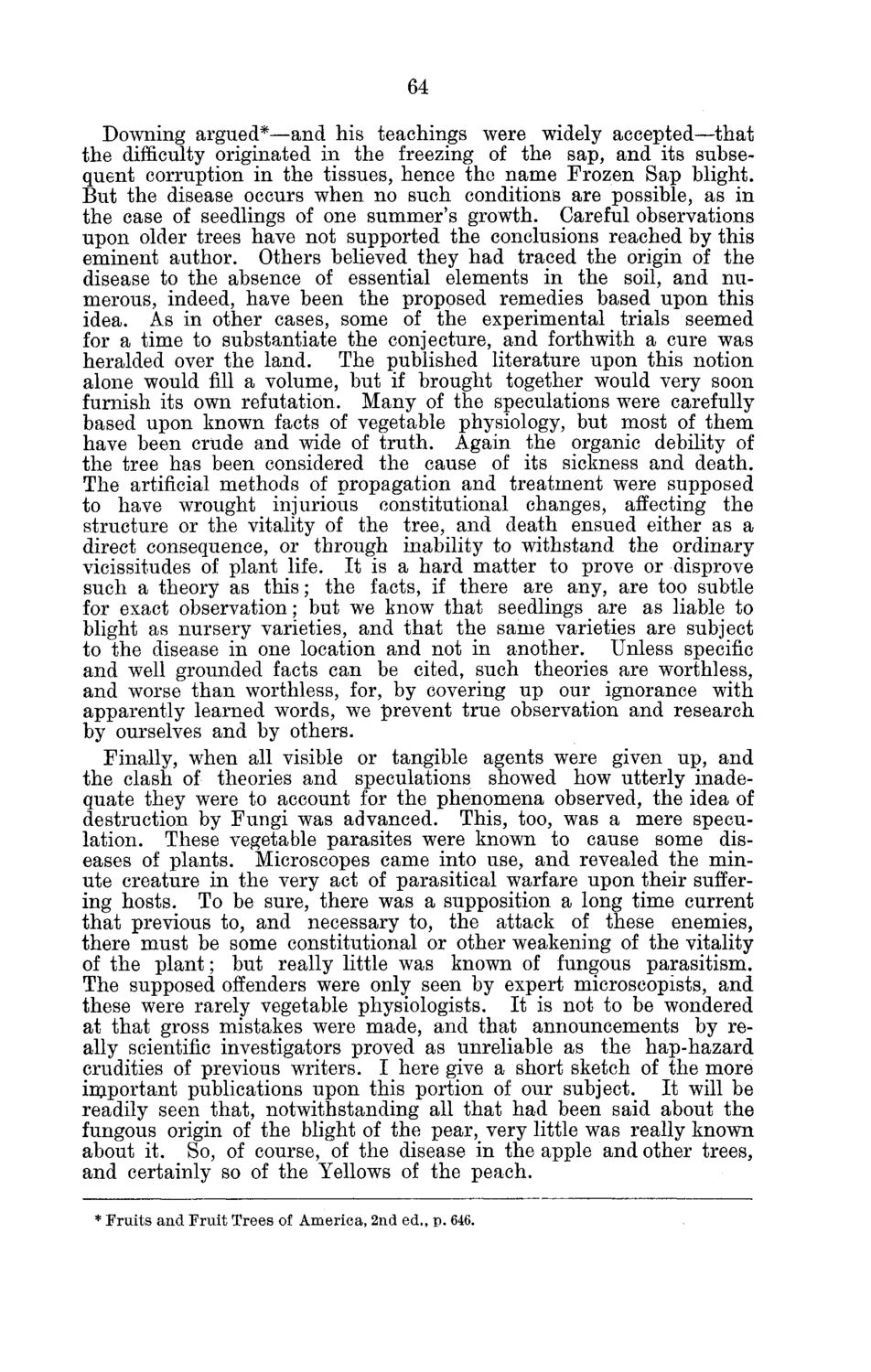| |
| |
Caption: Board of Trustees Minutes - 1880
This is a reduced-resolution page image for fast online browsing.

EXTRACTED TEXT FROM PAGE:
64 Downing argued*—and his teachings were widely accepted—that the difficulty originated in the freezing of the sap, and its subsequent corruption in the tissues, hence the name Frozen Sap blight. But the disease occurs when no such conditions are possible, as in the case of seedlings of one summer's growth. Careful observations upon older trees have not supported the conclusions reached by this eminent author. Others believed they had traced the origin of the disease to the absence of essential elements in the soil, and numerous, indeed, have been the proposed remedies based upon this idea. As in other cases, some of the experimental trials seemed for a time to substantiate the conjecture, and forthwith a cure was heralded over the land. The published literature upon this notion alone would fill a volume, but if brought together would very soon furnish its own refutation. Many of the speculations were carefully based upon known facts of vegetable physiology, but most of them have been crude and wide of truth. Again the organic debility of the tree has been considered the cause of its sickness and death. The artificial methods of propagation and treatment were supposed to have wrought injurious constitutional changes, affecting the structure or the vitality of the tree, and death ensued either as a direct consequence, or through inability to withstand the ordinary vicissitudes of plant life. It is a hard matter to prove or disprove such a theory as this; the facts, if there are any, are too subtle for exact observation; but we know that seedlings are as liable to blight as nursery varieties, and that the same varieties are subject to the disease in one location and not in another. Unless specific and well grounded facts can be cited, such theories are worthless, and worse than worthless, for, by covering up our ignorance with apparently learned words, we prevent true observation and research by ourselves and by others. Finally, when all visible or tangible agents were given up, and the clash of theories and speculations showed how utterly inadequate they were to account for the phenomena observed, the idea of destruction by Fungi was advanced. This, too, was a mere speculation. These vegetable parasites were known to cause some diseases of plants. Microscopes came into use, and revealed the minute creature in the very act of parasitical warfare upon their suffering hosts. To be sure, there was a supposition a long time current that previous to, and necessary to, the attack of these enemies, there must be some constitutional or other weakening of the vitality of the plant; but really little was known of fungous parasitism. The supposed offenders were only seen by expert microscopists, and these were rarely vegetable physiologists. It is not to be wondered at that gross mistakes were made, and that announcements by really scientific investigators proved as unreliable as the hap-hazard crudities of previous writers. I here give a short sketch of the more important publications upon this portion of our subject. It will be readily seen that, notwithstanding all that had been said about the fungous origin of the blight of the pear, very little was really known about it. So, of course, of the disease in the apple and other trees, and certainly so of the Yellows of the peach. * Fruits and Fruit Trees of America, 2nd ed., p. 646.
| |